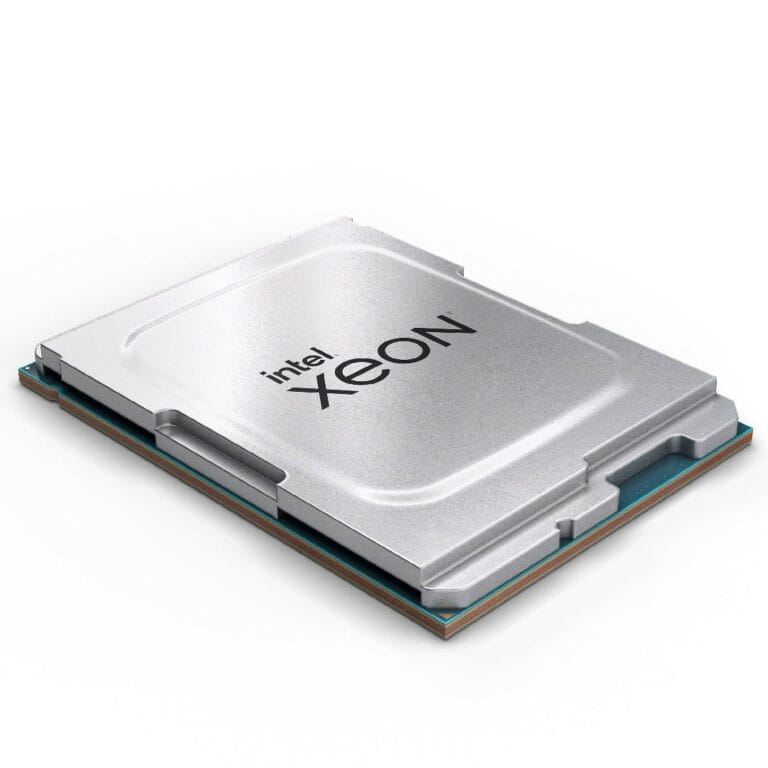The latest generation of Xeon workstation chips are an evolution of the previous ones. This Sapphire Rapids refresh is primarily Intel’s attempt to outpace AMD again.
Not entirely surprisingly, the Xeon W-3500 and W-2500 series are the successors to the W-3400 and W-2400 chips. As before, the emphasis is on multi-GPU support, multi-threaded workloads and reliable memory. Single-threaded performance also as always lags behind the i9 Core series, so any workstation user should think carefully about the specific use-case.
Other advantages of Intel’s Xeon line revolve around vPro and fast re-deployment of OS images thanks to Active Management. Again, however, this is nothing new.
Differences, though
Still, plenty has changed in this refresh of Sapphire Rapids, the code name for the architecture behind the previous and latest generations of Xeon. New is the support for faster DDR5 memory and also the number of cores per SKU has mostly gone up by 4, as with the top model, the w9-3595X with 60 cores.
Compared to the previous generation, the performance gain is about 10 percent for multi-threaded workloads, which is basically what you buy a Xeon for. That’s just a bit better than the increase in core count suggests.
Those who have been running the same Xeon workstation since 2019 have (as you should really expect) big performance gains ahead. Simulations in well-known architecture software are said to be up to 59 percent faster, and media rendering is roughly twice as fast on Xeon 3500 as gold for 3200-series Xeons.
Wattage price
Roger Chandler, VP Client Computing Group and GM, Creator and Workstation Solutions at Intel, explains that CPUs are also very relevant in the GenAI era. Some workloads are very data-intensive but have no GPU support at all. That’s where Intel has a clear advantage over AMD’s Threadripper line. For example, upscaling within Topaz Labs Video AI Pro is many times faster on a Xeon thanks to Advanced Matrix Extensions, and data-intensive workloads mostly benefit from the AVX-512 instruction set due to high parallelization.
The Xeon line does have a Wattage price to pay. The W-3500 series can claim up to 385W, while the W-2500 goes up to 250W. Now the Threadripper line also has hefty TDPs, but there we are talking about processors with higher core counts.
Also read: AMD gains ground with Epyc in servers – and grows everywhere
